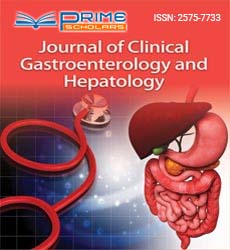Commentary Article - (2022) Volume 6, Issue 8
Functions of Cecum in the Digestive System in Humans and Animals
Syed Amir*
Department of Surgery, Tehran University of Medical Sciences, Iran
*Correspondence:
Syed Amir,
Department of Surgery, Tehran University of Medical Sciences,
Iran,
Email:
Received: 01-Aug-2022, Manuscript No. IPJCGH-22-14407;
Editor assigned: 03-Aug-2022, Pre QC No. IPJCGH-22-14407 (PQ);
Reviewed: 17-Aug-2022, QC No. IPJCGH-22-14407;
Revised: 22-Aug-2022, Manuscript No. IPJCGH-22-14407 (R);
Published:
29-Aug-2022, DOI: 10.36648/2575-7733.6.8.38
Description
Cecum, also spelled caecum, is the principal area of the digestive
organ and is a pocket or large cylinder-like structure in the
lower stomach cavity that collects undigested food items from
the small digestive system. The ileocecal valve, which separates
it from the ileum and slows food passage into the cecum, may
help prevent material from returning to the small intestine.
The primary functions of the cecum are to store liquids and
salts that remain after gastrointestinal processing and absorption,
as well as to combine these substances with a lubricant
called body fluid. Water and salts are ingested through a mucus
coating that covers the majority of the cecum’s contents. A
substantial layer of muscular tissue that generates stirring and
massaging actions lies beneath that covering.
Creatures have different cecum sizes and constructions. The
cecum is a developed organ seen in small herbivores like rabbits
that aids in the absorption of plant food and aids in the
retention of supplements. Cecum count can also change; the
stone hyrax, for example, has two ceca, however other insectivores
don’t have enough ceca. The most distal component of
the digestive system, the cecum, is located in the right iliac fossa
of the middle portion. When produced due to excrement,
aggravation, or danger, it can be touched because of how inadequately
it lies next to the ileocecal intersection. The cecum’s
inferior, blind end gives rise to its name. The rising colon and
the cecum are persistent in their superiority. The cecum is intraperitoneal
and has a changeable mesentery, unlike the rising
colon. The ileocecal valve is located between the cecum and
ileum. When peristalsis occurs, this architecture prevents the
reflux of large amounts of gut contents into the ileum and is
remembered to function latently rather than as a defined solid
sphincter.
While lungfish and the majority of amniotic species have a cecum,
neither are any land or water-proficient living things. It often
appears from the dorsal side of the digestive organ in repreptiles
as a single middle structure. Hyraxes, in contrast to most
vertebrates, and birds frequently have two paired ceca. Birds
do not possess ceca. Many species of mammalian herbivores
have a cecum that is substantially larger than the colon and
supports a large number of microorganisms that aid in the enzymatic
breakdown of plant material like cellulose. Interestingly,
the cecum in committed carnivores, whose diets contain almost
no plant stuff, is often partially or completely replaced by
the supplement. Raccoons, bears, and red pandas are among
the mammalian species that lack a cecum.
Even though they go by the moniker “pyloric ceca,” many fish
have numerous tiny out pockets along their digestive system
that serve the purpose of enlarging the general area of the
stomach-related epithelium. Some animals without spines, like
squid, may also have structures with the same name, although
these don’t have any connection to vertebrates.
The embryological midgut is where the cecum is obtained. The
vascular stock then passes through several of the main mesenteric
arteries. The ileocolic vein, which is a component of the
common mesenteric conduit, provides the blood vascular supply.
Consequently, it separates into front and back cecal conduits,
which directly supply the cecum. The associated ileocolic
vein supplies venous waste, which then empties into the main
mesenteric vein. The cecum and educational supplement are
innervated by sympathetic and parasympathetic components
of the autonomic sensory system. This is achieved through the
ileocolic portion of the unparalleled mesenteric plexus, which
transmits vagal and thoughtful nerve strands and travels along
a similar path to the ileocolic corridor.
Acknowledgement
None.
Conflict of Interest
Authors declare no conflict of interest.
Citation: Amir S (2022) Functions of Cecum in the Digestive System in Humans and Animals. J Clin Gastroenterol Hepatol. 6:38.
Copyright: © 2022 Amir S. This is an open-access article distributed under the terms of the Creative Commons Attribution License,
which permits unrestricted use, distribution, and reproduction in any medium, provided the original author and source
are credited.

